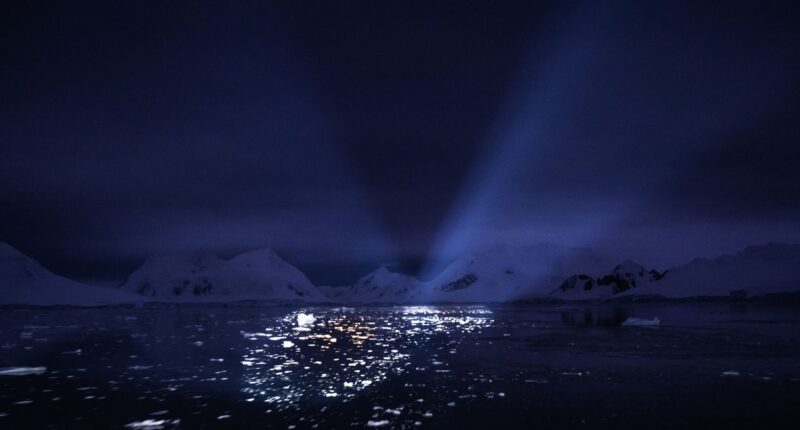

In the crushing, cold depths of the oceans, something unimaginably huge flows inexorably, barely a few centimeters per second, along a path it has traveled for millennia. Dense, dark rivers of water toil ceaselessly around the world, making up around 40 percent of the total volume of the deep oceans. They are gigantic conveyor belts transporting heat, oxygen, carbon, and nutrients around the planet, and shaping climate and weather at a global, regional, and local scale.
But something has changed, and these rivers appear to be slowing down. Unsurprisingly, climate change is likely to blame.
The sting in the tail is that the slowing of this abyssal machinery could actually speed up climate change, while also reducing the productivity of fisheries upon which so many organisms—including humans—depend for food.
In 1990, when the Intergovernmental Panel on Climate Change (IPCC) released its first ground-breaking report, the complex interaction between climate and ocean barely figured, says oceanographer and climate scientist Matthew England from the University of New South Wales in Sydney, Australia. “The projections back then were really simple,” he says. “They just had an atmosphere coupled to a very simplified ocean that had no dynamics.” A bit like a bathtub, he says. Oceans were known to absorb carbon dioxide and heat, but otherwise the interactions between ocean and climate were described in simplistic terms.
Ocean science has come a long way since then, and brought with it a detailed understanding of the key role that these global ocean conveyor belts play in shaping climate.
“Water moves, just like wind, in a three-dimensional space; we have currents that are going say, from left to right, and we have currents that are going up and down,” says coastal oceanographer Ruth Reef, from Monash University in Melbourne, Australia.
The horizontal movement of water is because of drag from wind. “When you have wind blowing across the ocean, it drags the ocean along with it,” Reef says. The vertical movement is the result of changes in the water density. At the poles, when salty seawater freezes into freshwater ice, the concentration of salt in the remaining water increases, which makes it denser, and so it sinks.
This is the start of the conveyor belt engine. Those trillions of tons of denser, colder water descend to the deepest reaches of the polar regions, then move through the depths towards the tropics. There that water rises and warms, and those warmer currents—such as the Gulf Stream, which moves west to east across the North Atlantic and maintains the relatively temperate winters in the United Kingdom—circulate around the Pacific, Indian, and Atlantic Oceans, releasing heat, oxygen, and nutrients and absorbing carbon dioxide, before they arrive back at the poles and the cycle starts again.
The Antarctic is the most powerful engine of this overturning circulation, through the formation of what’s called Antarctic bottom water. But this engine is in trouble.
“We show that a deep portion of the overturning circulation is slowing down, and the amount of oxygen reaching the deep ocean is declining,” says Kathryn Gunn, a physical oceanographer and climate scientist at the University of Southampton in the UK. She and her colleagues have been assessing how the formation of Antarctic bottom water has been changing. In a recently published study, which measured oxygen levels as a proxy for cold-water movement (because cold water carries more dissolved oxygen than warm), they looked at a particular section of the Antarctic shelf that borders the Ross Sea and the Australian Antarctic Basin. Their results suggest that the volume of this cold, salty, oxygen-rich water descending to the ocean floor declined by 28 percent between 1994 and 2017.









